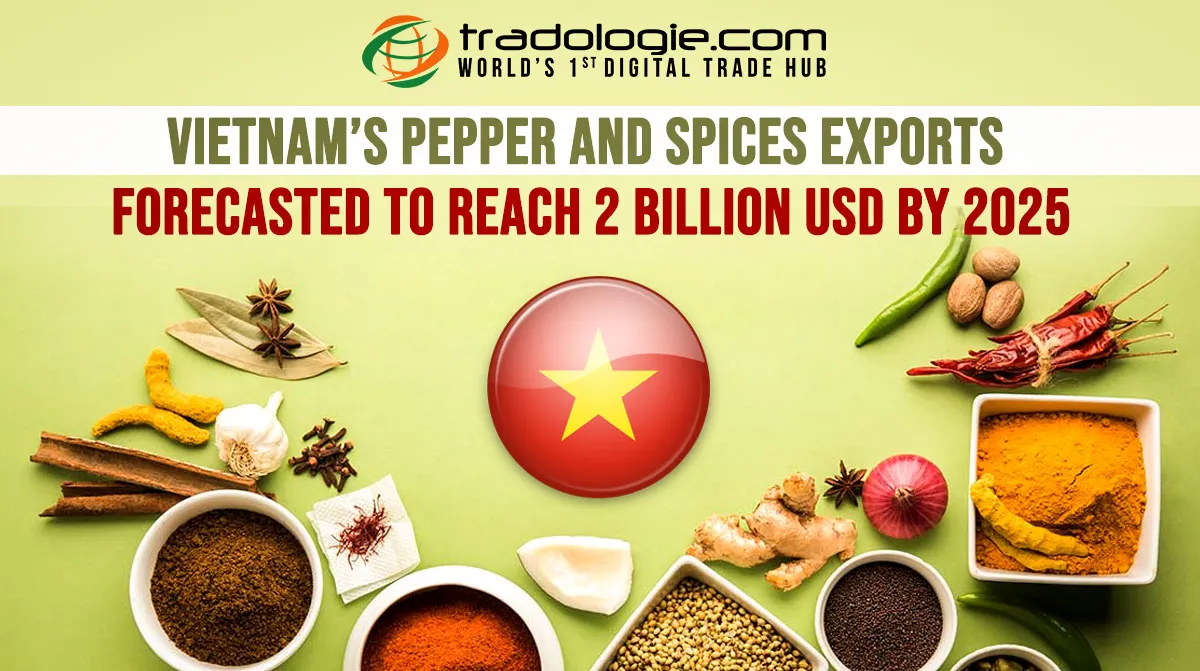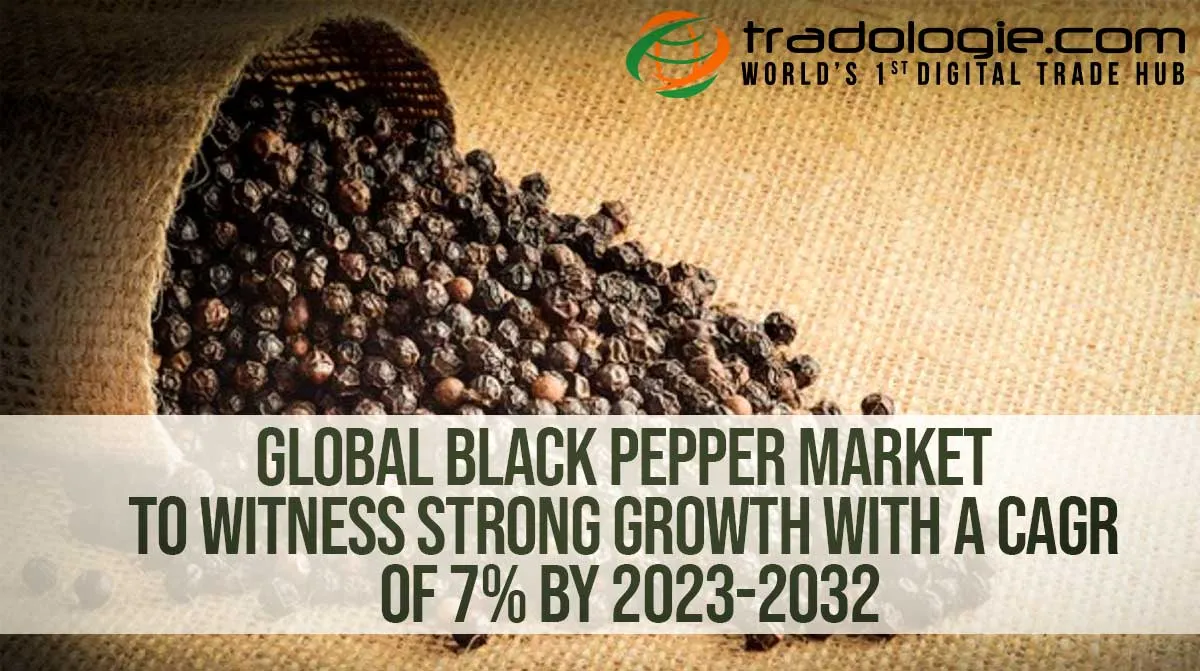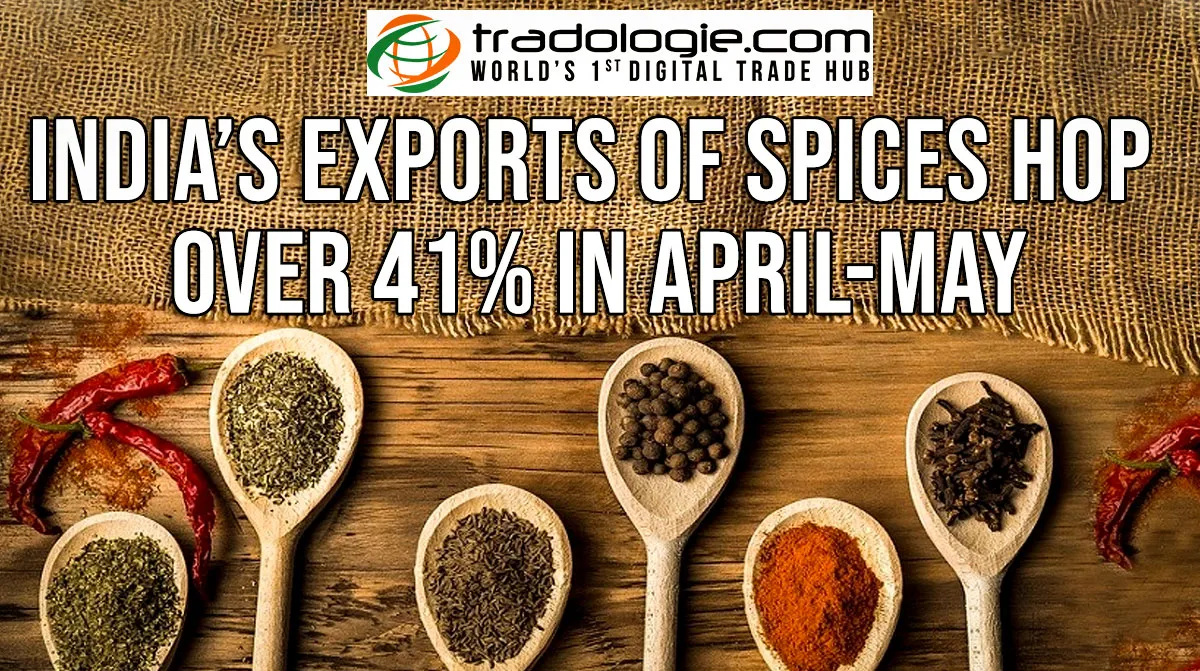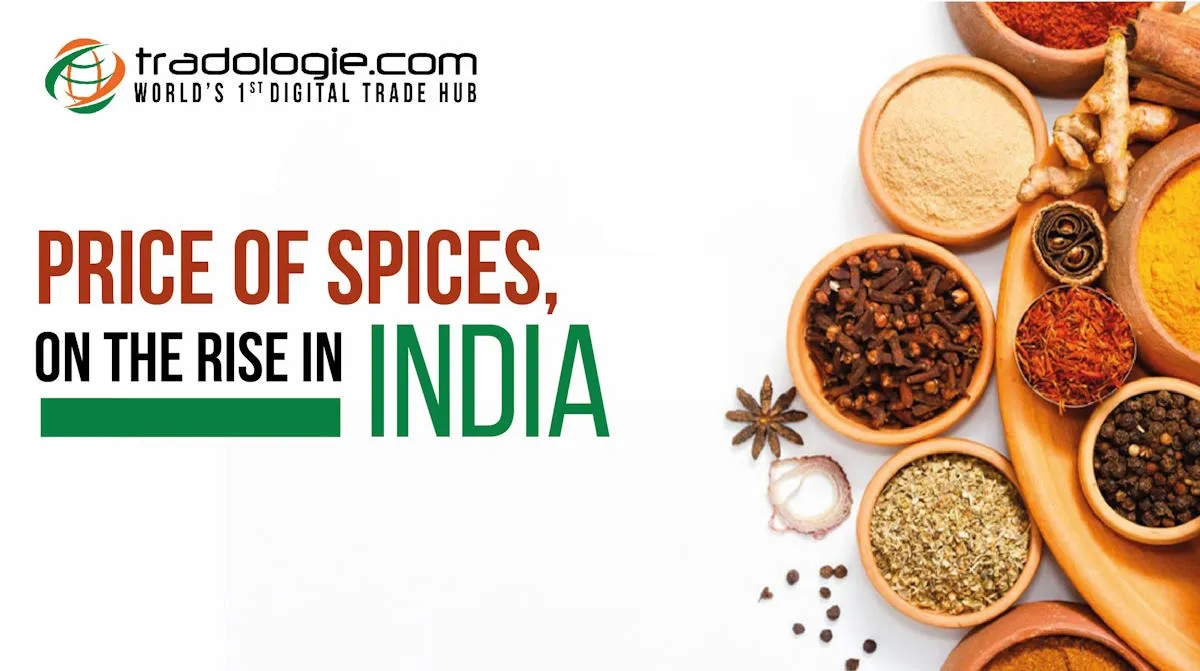Vietnam’s black pepper industry is once again making headlines, and for all the right reasons. As of October 2025, the nation’s black pepper exports have touched a staggering US $1.4 billion, with projections confidently pointing toward a record-breaking US $1.5 billion by year’s end. This milestone not only reaffirms Vietnam’s undisputed leadership in the global pepper trade but also reflects its strategic resilience in navigating market fluctuations, supply constraints, and evolving consumer demand across continents.
Keep reading this informative piece of article, as it will provide you with some of the vital information related to this topic.
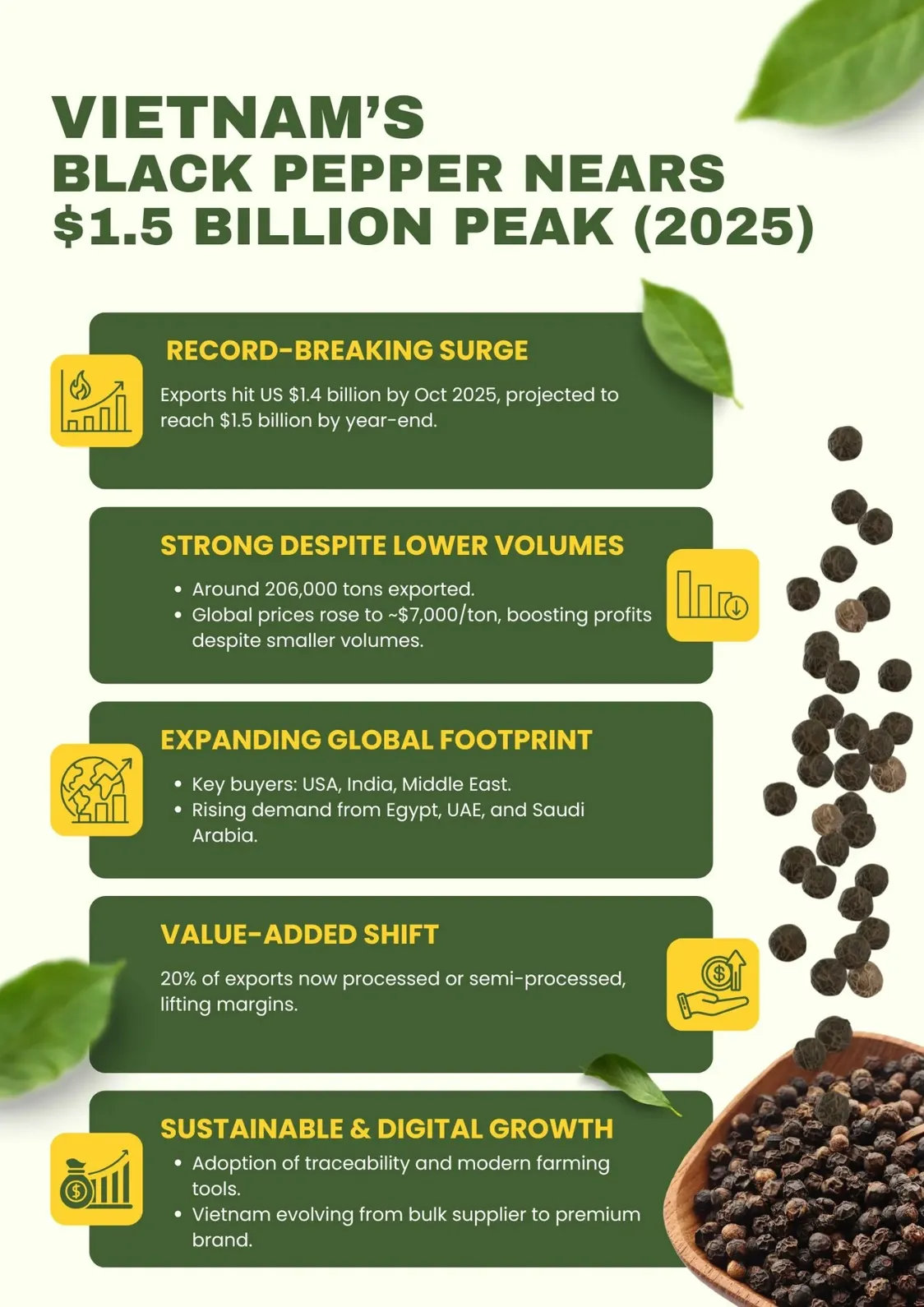
A Decade of Consistent Global Dominance
For more than a decade, Vietnam has been the epicenter of the global black pepper trade, accounting for a significant share of world production and exports. The country’s ascent in the spice trade has been a masterclass in agricultural modernization, supply chain integration, and trade diversification. By 2024, Vietnam’s black pepper exports earned nearly US $1.4 billion, even as volumes softened—evidence that value can outpace volume when market dynamics align.
Back in 2020, black pepper export volumes were higher in some cycles, and prices were materially lower, which led to wide swings in farmer income and planting decisions. The subsequent years witnessed fluctuations in volume, largely due to weather, area changes and international price movement, but Vietnam’s ability to offset declining volumes with rising prices and improved processing has kept revenue on an upward trajectory.
High Prices, Low Volume — A Profitable Equation
Interestingly, the surge in value this year has come despite a slight dip in export volume, which totaled about 206,000 tons by October 2025, compared with earlier years. The defining factor has been sharply higher global prices, which have lifted total export receipts by double digit percentages. October reports show cumulative exports near 206,300 tons and export value of about US $1.4 billion for the first ten months of 2025.
Market dynamics explain the premium: supply disruptions in competing origins and strong buying from the United States, India, and Middle Eastern markets have pushed average export prices higher. For some destination markets, export prices are reported at around US $7,000 per tonne, compared with roughly US $5,200 per tonne a year earlier in certain comparisons — a swing large enough to offset modest volume declines.
Market Diversification and Value Addition
Vietnam’s pepper exports are no longer dependent on a single geography. While the United States and India remain top buyers, newer destinations such as Egypt, the United Arab Emirates, and Saudi Arabia are expanding their import programmes. This diversification coupled with investments in modern drying, grinding and packaging has allowed Vietnam to supply a rising share of processed and semi processed pepper products — estimated by industry bodies to represent roughly 20 percent of 2025 exports — improving margins and reducing reliance on raw commodity pricing.
Comparative Momentum — From Stability to Supercycle
When compared with price and volume trends from 2018 through 2022, the industry appears to be in a price supercycle driven by low inventories and sustained demand. Earlier oversupply cycles flipped as producers cut area or shifted crops after low returns, tightening global availability. The result in 2025: higher unit prices, slightly reduced volumes, but record export value. Analysts and trade associations are calling 2025 a structural turning point for pepper markets.
Challenges Behind the Shine
Despite stellar numbers, challenges remain. Rising input costs, aging plantations and climate risk threaten longer term yield stability. Competing origins such as Indonesia and Brazil are improving quality controls and scaling capacity, which could temper price gains if they materially expand exports. Meanwhile, farmer viability is a concern in core provinces where replanting cycles and pest pressure require continuous technical support.
An Industry Entering Its Golden Era
What sets Vietnam apart is adaptability. The pepper sector has embraced digital supply chain tools, traceability systems and farmer training programmes that emphasize sustainable cultivation. These reforms have helped reposition Vietnam from a bulk supplier to a premium origin brand, trusted by global buyers seeking quality and reliability rather than simply the lowest price. As 2025 closes, Vietnam moving toward US $1.5 billion in pepper exports signals not only financial success but also the maturation of an export ecosystem.
Conclusion
Vietnam’s black pepper journey in 2025 is not just about numbers; it’s a story of resilience, reinvention and rising global stature. The convergence of high international prices, disciplined supply management and growing brand credibility has positioned Vietnam at the forefront of a rapidly changing global spice market. If the trajectory holds, the country’s pepper industry could transition from record breaking revenues to sustainable prosperity, reaffirming its legacy as a dominant force in the world spice trade.
Want to export or import black pepper in bulk globally? Tradologie is the world’s b2b platform for global agriculture trade with millions of verified buyers and sellers.


